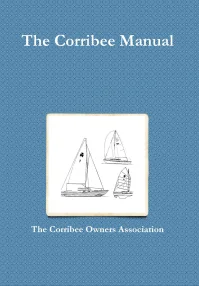Trailers
For occasional use, many people seem to use flatbed or car transporter trailers for bilge keelers. A flatbed truck with a HIAB is also a good solution for transporting between driveways, boatyards, etc.
A Corribee weighs about 1000kg and on a bilge keeler, the keels are 50-57 inches (1.27-1.45 meters) apart and so will fit on a 6 foot wide trailer. The reason for the variation is that the angles and profile of bilge keels varied before being standardised in 1980.
The keels are 45 inches (1.14 meters) along the bottom edge. The distance from the bow to the front of the bilge keel is 108 inches (2.74 meters). Keel heel to stern is 93 inches (2.36 meters). Neither measurement includes pushpit or pullpit.
Martin Hudson has kindly provided pictures of his soon to be restored braked road trailer for his bilge keeled boat Sea Sprite:
Buying a suitable new road trailer for a bilge keel Corribee (e.g. a SBS Trailers BK30/2000) will set you back about GBP 1500 as of 7/2009.
More dimensions:
Taken from a 1984 mk3 Corribee.
Keel to keel, measured to the outside faces, Forward = 1250 mm, Aft = 1265 mm
Width of keel itself, measured at the centre, 120 mm
Length of keel = 1150 mm
Click the image for a full-size view showing these dimensions:
Source: http://groups.yahoo.com/group/CorribeeCoromandel/message/2123
http://groups.yahoo.com/group/CorribeeCoromandel/message/128
Yard trailers
A yard trailer is usually specifically designed for launching, recovery and manoeuvring on slipways and within the confines of a boatyard. Since it is not used on the road it does not need precision wheel bearings or brakes and may even do without any form of steering system.
The trailer pictured below is an example (shown with the wheels removed) – it has simple stub axles, fixed (ie non-steering), and the wheels are held on with a simple washer and pin so can easily be removed. Also evident is the provision for docking arms which fit into square section tubular sockets on each side, and a hole in both the front and rear cross-beams to attach a towing bar or rope. Lashing eyes on each corner can be used to tie the boat in position and locate it fore-and-aft on the trailer.
Above is the same trailer in use, with the wheels, docking arms and towing bar fitted. It is worth mentioning that a yard trailer of this type could be winched onto a conventional road-going, flat-bed trailer. This is useful as it avoids having to immerse a road-going trailer when launching or recovering, with all the problems that entails with corrosion to bearings and brake mechanisms.
An excellent guide to UK towing regulations from the National Trailer and Towing Association can be viewed on their website:
or can be downloaded as a PDF.
Contribute
Do you have a story, information, brochure, manual, link or other relevant content that should be on this page? If so, we would be very grateful if you would leave it as a comment or email corribeeeditors@googlemail.com so we can post here – thanks!






January 18, 2013 at 22:36 |
Just got a quote from from SBS for £2300 incl VAT for a new trailer for Osprey. That is a bit rich for my blood (as it is £1000 more than I paid for her) so I am now looking for a secondhand trailer preferably already set up for a fin keel but I am happy to consider a “project” (wife will be pleased!) so if anyone should hear of one going please drop me a line. Many thanks
October 10, 2012 at 14:01 |
I have just bought a Coromandel without a trailer and am looking to buy one. The SBS range quoted above, BK30, is for a boat upto 1600Kg. Would a trailer in this range with a load capacity of 1280Kg or 1450 Kg be suitable?
May 26, 2010 at 21:02 |
Here is my own Trailer for MkI wood planking !
H+